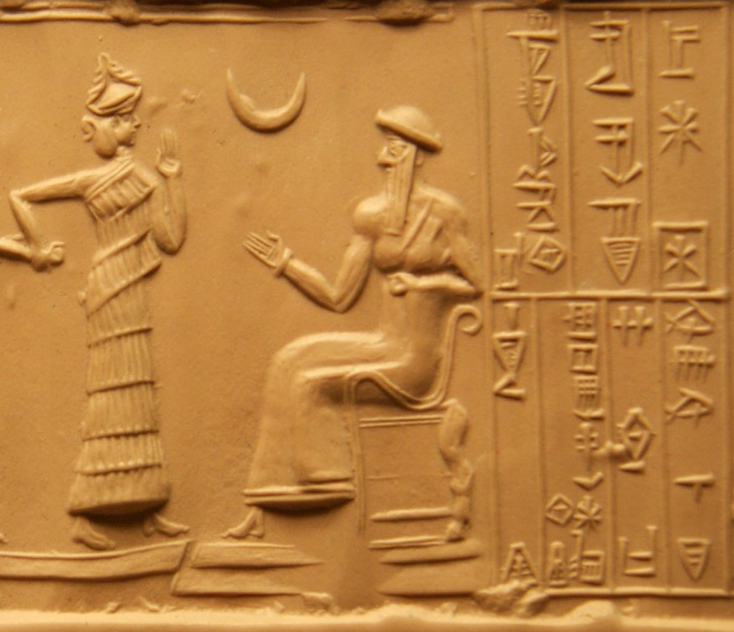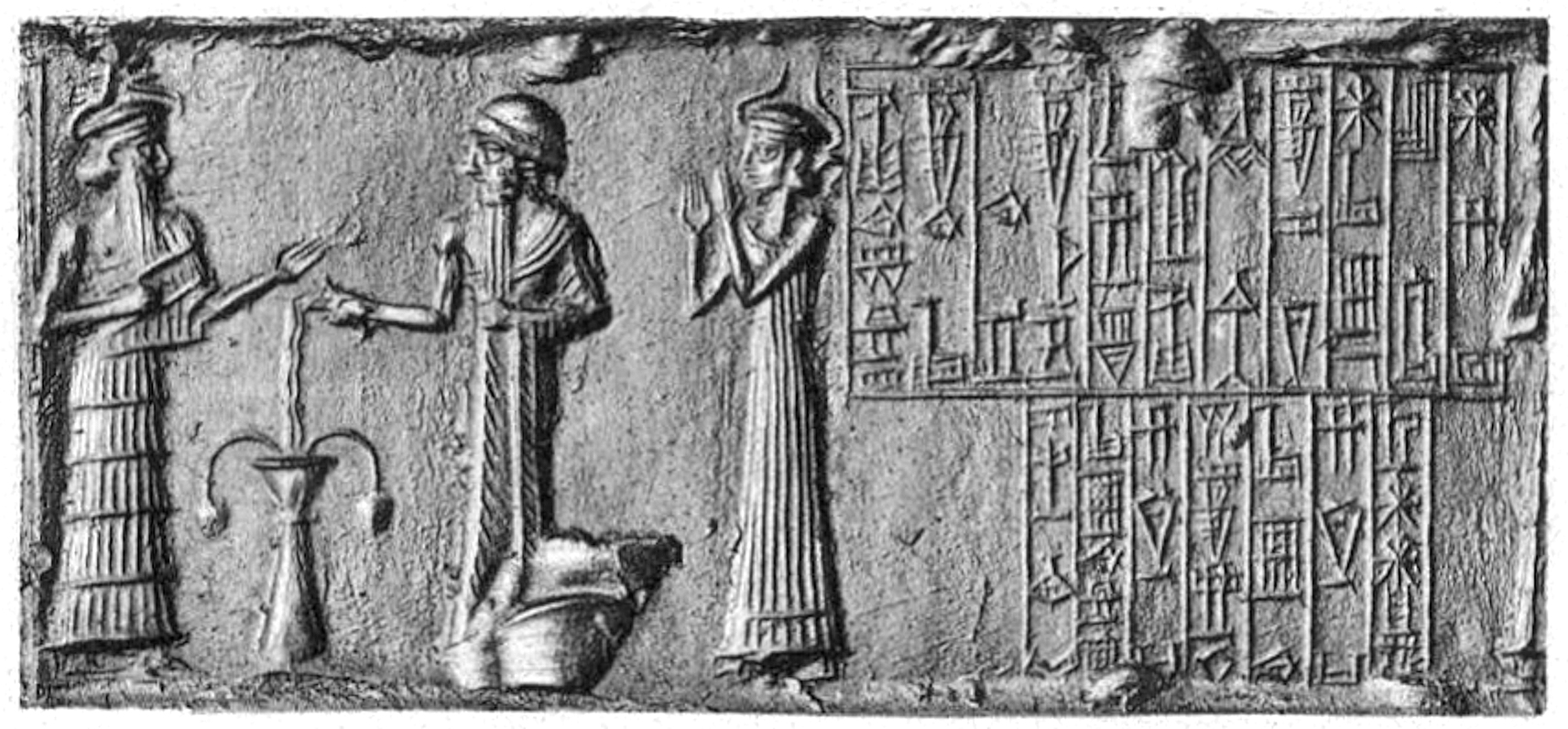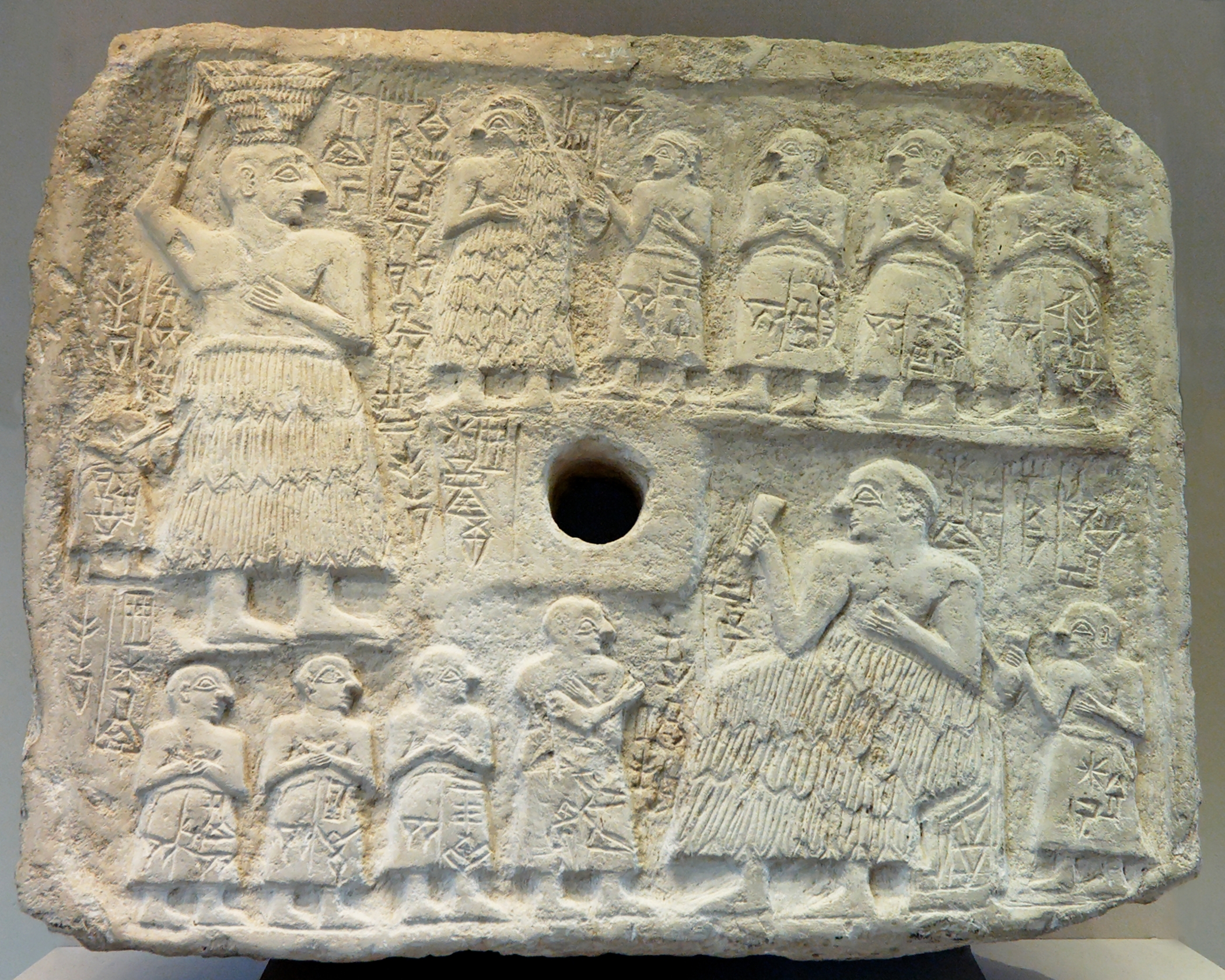|
Ur-Nammu
Ur-Nammu (or Ur-Namma, Ur-Engur, Ur-Gur, Sumerian language, Sumerian: ; died 2094 BC) founded the Sumerian Third Dynasty of Ur, in southern Mesopotamia, following several centuries of Akkadian Empire, Akkadian and Gutian period, Gutian rule. Though he built many temples and canals his main achievement was building the core of the Ur III Empire via military conquest, and Ur-Nammu is chiefly remembered today for his legal code, the Code of Ur-Nammu, the oldest known surviving example in the world. He held the titles of "King of Ur, and King of Sumer and Akkad". His personal goddess was Ninsuna. Reign According to the ''Sumerian King List'', Ur-Nammu reigned for 18 years. Year-names are known for 17 of these years, but their order is uncertain. One year-name of his reign records the devastation of Gutium, while two years seem to commemorate his legal reforms ("Year in which Ur-Nammu the king put in order the ways [of the people in the country] from below to above", "Year Ur-Nammu ... [...More Info...] [...Related Items...] OR: [Wikipedia] [Google] [Baidu] |
Third Dynasty Of Ur
The Third Dynasty of Ur or Ur III was a Sumerian dynasty based in the city of Ur in the 22nd and 21st centuries BC ( middle chronology). For a short period they were the preeminent power in Mesopotamia and their realm is sometimes referred to by historians as the Neo-Sumerian Empire. The Third Dynasty of Ur is commonly abbreviated as "Ur III" by historians studying the period. It is numbered in reference to previous dynasties, such as the First Dynasty of Ur (26-25th century BC), but it seems the once supposed Second Dynasty of Ur was never recorded. The Third Dynasty of Ur was the last Sumerian dynasty which came to preeminent power in Mesopotamia. It began after several centuries of control, exerted first by the Akkadian Empire, and then, after its fall, by Gutian and independent Sumerian city-state kings. It controlled the cities of Isin, Larsa, and Eshnunna and extended as far north as Upper Mesopotamia. The Ur III provinces, from north to south were Sippar, Tiwe, Urum, ... [...More Info...] [...Related Items...] OR: [Wikipedia] [Google] [Baidu] |
3rd Dynasty Of Ur
The Third Dynasty of Ur or Ur III was a Sumerian dynasty based in the city of Ur in the 22nd and 21st centuries BC (middle chronology). For a short period they were the preeminent power in Mesopotamia and their realm is sometimes referred to by historians as the Neo-Sumerian Empire. The Third Dynasty of Ur is commonly abbreviated as "Ur III" by historians studying the period. It is numbered in reference to previous dynasties, such as the First Dynasty of Ur (26-25th century BC), but it seems the once supposed Second Dynasty of Ur was never recorded. The Third Dynasty of Ur was the last Sumerian dynasty which came to preeminent power in Mesopotamia. It began after several centuries of control, exerted first by the Akkadian Empire, and then, after its fall, by Gutian and independent Sumerian city-state kings. It controlled the cities of Isin, Larsa, and Eshnunna and extended as far north as Upper Mesopotamia. The Ur III provinces, from north to south were Sippar, Tiwe, Urum, P ... [...More Info...] [...Related Items...] OR: [Wikipedia] [Google] [Baidu] |
Code Of Ur-Nammu
The Code of Ur-Nammu is the oldest known surviving law code. It is from Mesopotamia and is written on tablets, in the Sumerian language . It contains strong statements of royal power like "I eliminated enmity, violence, and cries for justice."Cos II:409 Laws of Ur-Namma Discovery The first recension of the code (Ni 3191), an Old Babylonian period copy in two fragments found at Nippur, in what is now Iraq, was translated by Samuel Noah Kramer in 1952. These fragments are held at the Istanbul Archaeology Museums. Owing to its partial preservation, only the long prologue and five of the laws were discernible. Kramer noted that luck was involved in the discovery: Two further tablet fragments (IM 85688+85689) now held at Iraq Museum in Baghdad, with no prologue or concluding formula, were found in Ur and translated in 1965, allowing some 30 of the 57 laws to be reconstructed. Two exemplars were found in Sippar. One (Si 277), held at the Istanbul Museum, bears the prologue and li ... [...More Info...] [...Related Items...] OR: [Wikipedia] [Google] [Baidu] |
King Of Sumer And Akkad
King of Sumer and Akkad ( Sumerian: '' lugal-ki-en-gi-ki-uri'', Akkadian: ''šar māt Šumeri u Akkadi'') was a royal title in Ancient Mesopotamia combining the titles of " King of Akkad", the ruling title held by the monarchs of the Akkadian Empire (2334–2154 BC) with the title of " King of Sumer". The title simultaneously laid a claim on the legacy and glory of the ancient empire that had been founded by Sargon of Akkad (r. 2334–2279 BC) and expressed a claim to rule the entirety of lower Mesopotamia (composed of the regions of Sumer in the south and Akkad in the north). Despite both of the titles "King of Sumer" and "King of Akkad" having been used by the Akkadian kings, the title was not introduced in its combined form until the reign of the Neo-Sumerian king Ur-Nammu ( 2112–2095 BC), who created it in an effort to unify the southern and northern parts of lower Mesopotamia under his rule. The older Akkadian kings themselves might have been against linking Sumer and A ... [...More Info...] [...Related Items...] OR: [Wikipedia] [Google] [Baidu] |
Shulgi
Shulgi ( dšul-gi,(died c. 2046 BC) formerly read as Dungi) of Ur was the second king of the Third Dynasty of Ur. He reigned for 48 years, from (Middle Chronology). His accomplishments include the completion of construction of the Great Ziggurat of Ur, begun by his father Ur-Nammu. On his inscriptions, he took the titles "King of Ur", " King of Sumer and Akkad", adding " King of the four corners of the universe" in the second half of his reign. He used the symbol for divinity ( ) before his name, marking his apotheosis, from at least the 21st year of his reign and was worshipped in the Ekhursag palace he built. Shulgi was the son of Ur-Nammu king of Ur and his queen consort Watartum. Life and reign Shulgi apparently led a major modernization of the Third Dynasty of Ur. He improved communications, reorganized the army, reformed the writing system and weight and measures, unified the tax system, and created a strong bureaucracy. He also wrote a law code, now known as the ... [...More Info...] [...Related Items...] OR: [Wikipedia] [Google] [Baidu] |
Lagash
Lagash (; cuneiform: LAGAŠKI; Sumerian language, Sumerian: ''Lagaš'') was an ancient city-state located northwest of the junction of the Euphrates and Tigris rivers and east of Uruk, about east of the modern town of Al-Shatrah, Iraq. Lagash (modern Al-Hiba in Dhi Qar Governorate) was one of the oldest cities of the Ancient Near East. The ancient site of Nina (Tell Zurghul) is around away and marks the southern limit of the state. Nearby Girsu (modern Telloh), about northwest of Lagash, was the religious center of the Lagash state. The Lagash state's main temple was the E-ninnu at Girsu, dedicated to the god Ningirsu. The Lagash state incorporated the ancient cities of Lagash, Girsu, Nina. History Though some Uruk period pottery shards were found in a surface survey, significant occupation at the site of Lagash began early in the 3rd Millennium BC, in the Early Dynastic Period (Mesopotamia), Early Dynastic I period (c. 2900–2600 BC), surface surveys and excavations show tha ... [...More Info...] [...Related Items...] OR: [Wikipedia] [Google] [Baidu] |
Eridu
Eridu (; Sumerian: eridugki; Akkadian: ''irîtu'') was a Sumerian city located at Tell Abu Shahrain (), also Abu Shahrein or Tell Abu Shahrayn, an archaeological site in Lower Mesopotamia. It is located in Dhi Qar Governorate, Iraq, near the modern city of Basra. Eridu is traditionally considered the earliest city in southern Mesopotamia based on the Sumerian King List. Located 24 kilometers south-southwest of the ancient site of Ur, Eridu was the southernmost of a conglomeration of Sumerian cities that grew around temples, almost in sight of one another. The city gods of Eridu were Enki and his consort Damkina. Enki, later known as Ea, was considered to have founded the city. His temple was called E-Abzu, as Enki was believed to live in Abzu, an aquifer from which all life was thought to stem. According to Sumerian temple hymns, another name for the temple of Ea/Enki was called Esira (Esirra). At nearby Ur there was a temple of Ishtar of Eridu (built by Lagash's ruler Ur- ... [...More Info...] [...Related Items...] OR: [Wikipedia] [Google] [Baidu] |
Gutian Period
The Gutian dynasty ( Sumerian: , gu-ti-umKI) was a line of kings, originating among the Gutian people. Originally thought to be a horde that swept in and brought down Akkadian and Sumerian rule in Mesopotamia, the Gutians are now known to have been in the area for at least a century by then. By the end of the Akkadian period, the Sumerian city of Adab was occupied by the Gutians, who made it their capital.M. Molina, "The palace of Adab during the Sargonic period", D. Wicke (ed.), ''Der Palast im antiken und islamischen Orient, Colloquien der Deutschen Orient-Gesellschaft 9'', Wiesbaden: Harrassowitz 2019, pp. 151-20 The Gutian Dynasty came to power in Mesopotamia near the end of the 3rd millennium BC, after the decline and fall of the Akkadian Empire. How long Gutian kings held rulership over Mesopotamia is uncertain, with estimates ranging from a few years up to a century. The end of the Gutian dynasty is marked by the accession of Uruk ruler Utu-hengal ( 2055–2048 BC), marking ... [...More Info...] [...Related Items...] OR: [Wikipedia] [Google] [Baidu] |
Ninsuna
Ninsun (also called Ninsumun, cuneiform: dNIN.SUMUN2; Sumerian: ''Nin-sumun(ak)'' "lady of the wild cows") was a Mesopotamian goddess. She is best known as the mother of the hero Gilgamesh and wife of deified legendary king Lugalbanda, and appears in this role in most versions of the ''Epic of Gilgamesh''. She was associated with Uruk, where she lives in this composition, but she was also worshiped in other cities of ancient Mesopotamia, such as Nippur and Ur, and her main cult center was the settlement KI.KALki. The degree of Ninsun's involvement in Gilgamesh's life varies between various versions of the ''Epic''. She only plays an active role in the so-called "Standard Babylonian" version, in which she advises her son and interprets his dreams, petitions the sun god Shamash to protect him, and accepts Enkidu as a member of her family. In the Old Babylonian version her role is passive, with her actions being merely briefly discussed by Shamhat, while a Hittite translation of t ... [...More Info...] [...Related Items...] OR: [Wikipedia] [Google] [Baidu] |
Nippur
Nippur (Sumerian language, Sumerian: ''Nibru'', often logogram, logographically recorded as , EN.LÍLKI, "Enlil City;"I. E. S. Edwards, C. J. Gadd, N. G. L. Hammond, ''The Cambridge Ancient History: Prolegomena & Prehistory'': Vol. 1, Part 1, Cambridge University Press, 1970 Akkadian language, Akkadian: ''Nibbur'') was an ancient Sumerian city. It was the special seat of the worship of the Sumerian god Enlil, the "Lord Wind", ruler of the Ancient Near Eastern cosmology , cosmos, subject to Anu, An alone. Nippur was located in modern Nuffar 5 miles north of modern Afak, Al-Qādisiyyah Governorate, Iraq. It is roughly 200 kilometers south of modern Baghdad and about 100 km southeast of the ancient city of Babylon. Occupation at the site extended back to the Ubaid period (Ubaid 2 – Hajji Muhammed), the Uruk period, and the Jemdet Nasr period. The origin of the ancient name is unknown but different proposals have been made. History Nippur never enjoyed political hegemony in its ... [...More Info...] [...Related Items...] OR: [Wikipedia] [Google] [Baidu] |
Great Ziggurat Of Ur
The Ziggurat (or Great Ziggurat) of Ur ( Sumerian: "Etemenniguru", meaning "house whose foundation creates terror") is a Neo-Sumerian ziggurat in what was the city of Ur near Nasiriyah, in present-day Dhi Qar Province, Iraq. The structure was built during the Early Bronze Age (21st century BC) but had crumbled to ruins by the 6th century BC of the Neo-Babylonian period, when it was restored by King Nabonidus. Its remains were excavated in the 1920s and 1930s by international teams led by Sir Leonard Woolley. Under Saddam Hussein in the 1980s, they were encased by a partial reconstruction of the façade and the monumental staircase. The Ziggurat of Ur is the best-preserved of those known from Mesopotamia, besides the ziggurat of Dur Untash (Chogha Zanbil). It is one of three well-preserved structures of the Neo-Sumerian city of Ur, along with the Royal Mausolea and the Palace of Ur-Nammu (the ''E-hursag''). Sumerian ziggurat The ziggurat was built by King Ur-Nammu, who dedi ... [...More Info...] [...Related Items...] OR: [Wikipedia] [Google] [Baidu] |







